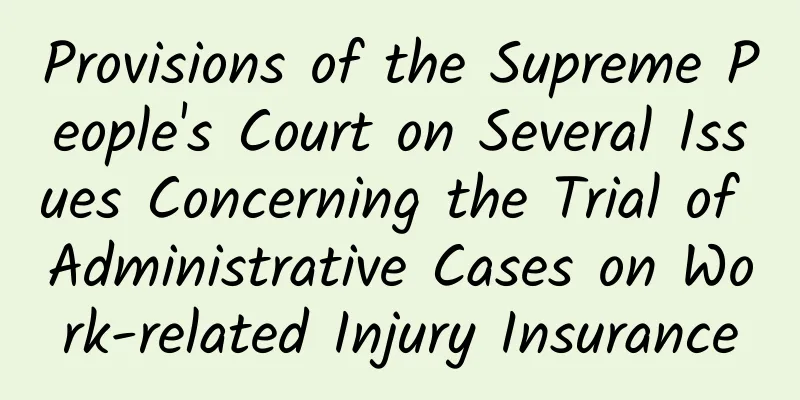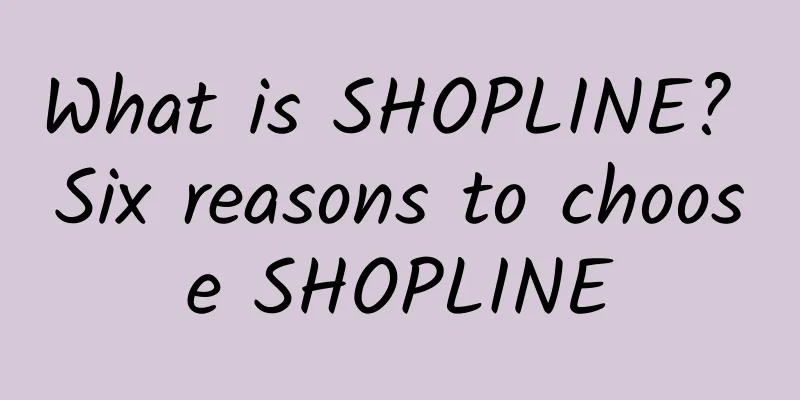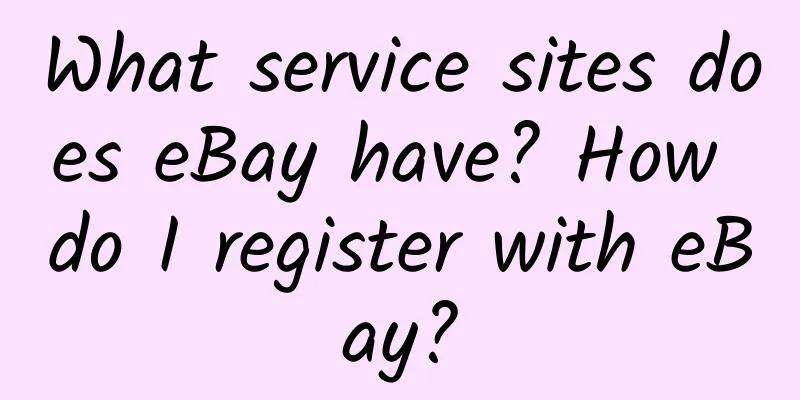Provisions of the Supreme People's Court on Several Issues Concerning the Trial of Administrative Cases on Work-related Injury Insurance

|
The "Provisions of the Supreme People's Court on Several Issues Concerning the Trial of Administrative Cases of Work-Related Injury Insurance" (hereinafter referred to as the "Provisions") recently issued by the Supreme People's Court will come into effect on September 1, 2014. Correctly understanding and applying the spirit of the relevant provisions of this judicial interpretation is of great significance for the correct trial of administrative cases of work-related injury insurance in accordance with the law. The main contents of the Regulations are 10 articles, covering the following three aspects: (II) The issues of "work reasons, working hours and workplace", "work-related outings" and "commuting" in the identification of work-related injuries have been refined. The first is the identification of work reasons, working hours and workplaces. The Regulations have determined the following three ideas: First, the identification of "work reasons" should consider factors such as whether the work responsibilities are fulfilled, whether the employer assigns, whether it is related to the work responsibilities, and whether it is based on the legitimate interests of the employer; second, the identification of "working hours" should consider whether it is the time required for work; third, the identification of "workplace" should consider whether it is the area involved in the work and the reasonable area naturally extended. On this basis, Article 4 of the Regulations provides that: "If the social insurance administrative department determines that the following circumstances are work-related injuries, the people's court shall support it: (i) the employee is injured during working hours and in the workplace, and the employer or the social insurance administrative department has no evidence to prove that it is caused by non-work reasons; (ii) the employee is injured while participating in activities organized by the employer or assigned by the employer to participate in activities organized by other units; (iii) during working hours, the employee is injured in a reasonable area between multiple workplaces related to his or her job responsibilities; (iv) other injuries related to the performance of work responsibilities, and are injured during working hours and in a reasonable area." This regulation not only lists several common but controversial work-related injury recognition situations in practice, but also strives to reveal the basic elements of the "three works" in the listed situations. The second is the work-related injury recognition situation related to "work reasons, working hours and workplaces". 1. Work-related injury recognition during "work-related absence". "Work-related absence" is a special situation of "working hours" and should be considered comprehensively from aspects such as whether the employee is away for work or for the legitimate interests of the employer. Article 5, paragraph 1 of the Regulations provides that: "If the social insurance administrative department determines that the following circumstances are 'periods of being away from home for work', the people's court shall support it: (i) the period when the employee is assigned by the employer or is engaged in activities related to work duties outside the workplace due to work needs; (ii) the period when the employee is assigned by the employer to study or attend meetings outside the workplace; (iii) the period when the employee is engaged in other activities outside the workplace due to work needs." In order to better protect the legitimate rights and interests of employees who are injured while away from home for work, Article 5, paragraph 2 of the Regulations provides that as long as the employee is not injured while engaging in personal activities unrelated to work or being assigned by the employer to study or attend meetings outside the workplace, it should be recognized as a work-related injury in principle. 2. Regarding the identification of "on the way to and from get off work". Article 6 of the Regulations provides that: "Where the social insurance administrative department identifies the following situations as 'commuting to get off work', the people's court shall support the decision: (1) commuting to and from work on a reasonable route between the workplace and the residence, habitual residence, or work dormitory within a reasonable time; (2) commuting to and from work on a reasonable route between the workplace and the residence of the spouse, parents, or children within a reasonable time; (3) engaging in activities necessary for daily work and life, and commuting to and from get off work on a reasonable route and within a reasonable time; (4) commuting to and from get off work on other reasonable routes within a reasonable time." (III) Three ways of handling work-related injuries caused by a third party are clarified. Article 42 of the Social Insurance Law stipulates: "If a work-related injury is caused by a third party, and the third party does not pay the work-related injury medical expenses or the third party cannot be identified, the work-related injury insurance fund shall pay first. After the work-related injury insurance fund pays first, it has the right to seek compensation from the third party." According to this article, workers with work-related injuries can request tort compensation and enjoy work-related injury benefits in accordance with the Tort Liability Law and the Social Insurance Law respectively. In accordance with this legislative spirit, Article 8 of the Regulations clarifies the following three ways of handling: 1. If a worker is injured due to a third party, and the social insurance administrative department makes a decision not to accept the work-related injury identification application or not to identify the work-related injury on the grounds that the worker or his close relatives have filed a civil lawsuit against the third party or obtained civil compensation, the people's court will not support it. 2. If a worker is injured due to a third party, the social insurance administrative department has made a work-related injury identification, and the worker or his close relatives have not filed a civil lawsuit against the third party or have not yet obtained civil compensation, and sue the social insurance agency to pay work-related injury insurance benefits, the people's court should support it. 3. If an employee suffers a work-related injury due to the fault of a third party, and the social insurance agency refuses to pay work-related injury insurance benefits on the grounds that the employee or his/her immediate family has filed a civil lawsuit against the third party, the people's court will not support the refusal, except for medical expenses already paid by the third party. In addition, the Regulations also regulate administrative trial procedures involving the confirmation of labor relations. In accordance with the requirement of Article 36, Paragraph 2 of the Social Insurance Law that "the determination of work-related injuries should be simple and convenient", Article 2 of the Regulations stipulates: "After the people's court accepts an administrative case for the determination of work-related injuries, if it is found that the plaintiff or the third party has applied for labor arbitration or filed a civil lawsuit regarding whether there is a labor relationship before filing an administrative lawsuit, the trial of the administrative case shall be suspended." According to this provision, if the plaintiff or the third party has not applied for labor arbitration or filed a civil lawsuit before filing an administrative lawsuit, the people's court does not need to suspend the trial of the administrative case, thereby speeding up the legal procedures for the determination of work-related injuries, which is of positive significance for protecting the legitimate rights and interests of injured employees. |
<<: Target factory audit assessment three major requirements
>>: Occupational Hazard Factors of Benzene and Formaldehyde
Recommend
How about the promotion and traffic-generating tool Reddit?
1. What is Reddit? Reddit is a famous American ne...
What is Ifttt? What are the advantages and applications of ifttt?
Ifttt is the abbreviation of "if this then t...
Importance of HACCP Certification
In the food production process, the early detect...
Some issues in Walmart's SCS factory audit
When Walmart conducts a partial audit of the SCS ...
Create a big sale on eBay! How to choose products on eBay?
1. Find popular products Method 1: Search for bes...
The main differences between Wal-Mart factory inspection and THE HOME DEPOT factory inspection
What are the main differences between Wal-Mart fa...
Implementation of BSCI Social Responsibility German Industry Standards
1. Implementation steps of social responsibility ...
What services does seller vps provide? What are the advantages of seller vps?
What services does seller vps provide? 1.10Gbps f...
WRAP certification official website system upgrade
According to the official notice issued by WRAP, f...
HM Factory Audit Hallmark Factory Audit Company Supplier Code of Conduct
HM Factory Audit Hallmark Factory Audit Company S...
What is VOTOBO? What are the functions of VOTOBO?
As the first excellent hit product development en...
Basic characteristics of HACCP certification
★、Targeted: HACCP certification is highly target...
SCS Factory Inspection——Walmart Anti-Terrorism Factory Inspection Certification
Walmart's anti-terrorism factory inspection i...
OCS certification, one of the current organic cotton certification systems
The Organic Content Standard is an organic certif...
Coca-Cola aims to make 100% of its packaging recyclable by 2030
Recently, Coca-Cola announced that it will reshape...









